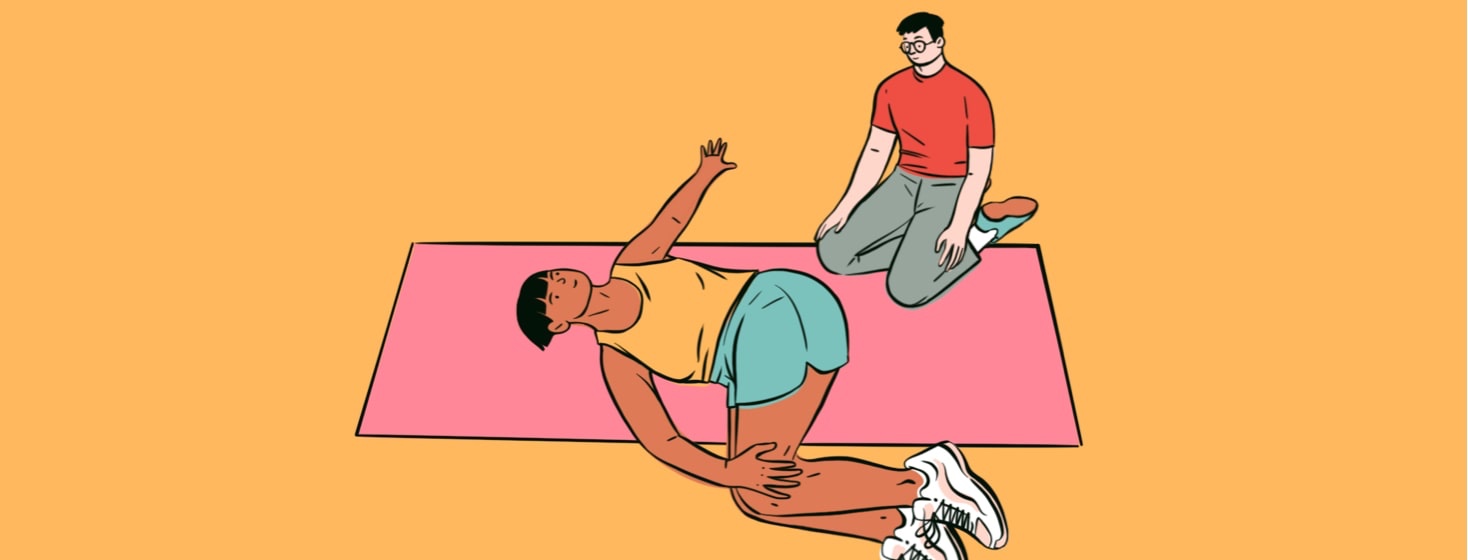Avascular Necrosis: Pain, Posture, & Physiotherapy
Fallen arches
In my early childhood, the arches of my feet did not fully develop due to a hereditary condition known as flat foot. A flat foot is a condition that results in a fallen arch with the foot pointed outward. It is a primary risk factor for bad posture. One of the most common symptoms is pain and fatigue along the inner side of the foot, especially in the arches and heels. When people with flatfeet stand up, the feet point outward, and the entire soles of the feet fall and touch the floor.1
To alleviate the pain, my doctors recommended non-surgical treatments like braces and custom insoles that offer arch support. However, wearing foot inserts as a child was uncomfortable. I wish I knew then that my ongoing battle with sickle cell disease would only aggravate the knee-to-foot pain and lead to poor posture in adulthood.
More recently, I started experiencing more pain and a limited range of motion in my right hip. It was brought on by avascular necrosis (AVN). Complementary treatments like yoga, Epsom salt baths, and acupuncture relieved tension but didn't completely take away the pain. So, I started seeking help from a physiotherapist.
A case of bad posture
Posture is how our body supports itself when we’re standing, sitting, or lying down. Good posture is symmetrical; evenly distributing weight throughout the body. In my case, my shoulders are rounded forward, the normal curve of my spine has lost some of its curvatures, and my body position is asymmetrical. This posture misalignment has led to pain in my back, thighs, and pelvic area.
Over time, having poor posture has presented mobility and balance issues for me. I've noticed a decreased range of motion in a few areas, particularly my shoulder and right hip. As my sickle cell disease progressed, my hips got stiffer with recurrent pain in my leg, groin, and thigh. The pain is often made worse by strenuous activity and internal rotation/bending of the joint.
To manage AVN and prevent any further damage to the joint, medical experts recommended surgical procedures like core decompression or bone reshaping (osteotomy), medicines like bisphosphonates or vasodilators, and physical therapy, which I opted for. My theory is that it's a more direct approach to the problem. I know physical therapy will not cure avascular necrosis but it can slow down the rate of progression and help to decrease AVN pain.
Physical therapy management
My goal for physical therapy was three-fold: 1.) Correct posture; 2.) Improve functionality and; 3.) Relieve pain. The first thing the physiotherapist asks is the location of pain. Then, when it began, what actions prompted the initial pain, and what movements ease the intensity of pain.
This information was taken as a pre-diagnosis measurement to understand hip mobility and pain level. This was followed by a physical examination of the lower body. To decrease pain and inflammation, they used interferential current therapy (a type of electrical muscle stimulation). This relieved pain by penetrating the deep tissues of the hip to promote bone growth.
At-home exercises
Using a combination of tools from hands-on treatment to stretches and physiotherapy exercises, we are all working on correcting posture and rebalancing the body. To keep my hip and the associated muscles strong, a series of at-home strengthening and stretching exercises were recommended from hip circles to floor hip flexors and hip marches. Adding exercises to my daily routine has been extremely beneficial in improving functionality.
It's important to note that maintaining range of motion helps to avoid further wear and tear on the hip joint. On lazy days, I do clamshell exercises in bed to build up strength in my hips, thighs, and glutes. This type of movement helps to stabilize the pelvic muscles and relieve any tightness in the lower back.
Slow but steady recovery
According to orthopedic experts, AVN is a disease that results from the temporary or permanent loss of blood supply to the bone. If it happens near a joint, the joint surface may collapse. It is crucial to stretch every day for short periods. A stretch exercise that can easily be added to your routine is the butterfly pose, which helps to stretch out the hips and improve blood circulation that supports healing.2
My doctors say when doing passive hip and stretching exercises, only mild discomfort is acceptable. If you notice any sharp pain, you should stop the exercise immediately and seek professional help because it means too much pressure is being put on the delicate healing bone.
As my physical therapy journey progresses, I'm hopeful that we can slowly introduce a 3-dimensional motion in the hip joint while standing, sitting, and lying down. My understanding is that after stem cell transplantation, avascular necrosis does not get worse because there is no active sickling in the blood vessels.
Patient Tip:
Before attempting any stretches, I recommend warm-up exercises which focus on warming up the large muscles around your hips to boost circulation and flexibility. For better stability, I perform hip circles near stable objects like a handlebar or using one of the 4 corners of my work desk.

Join the conversation